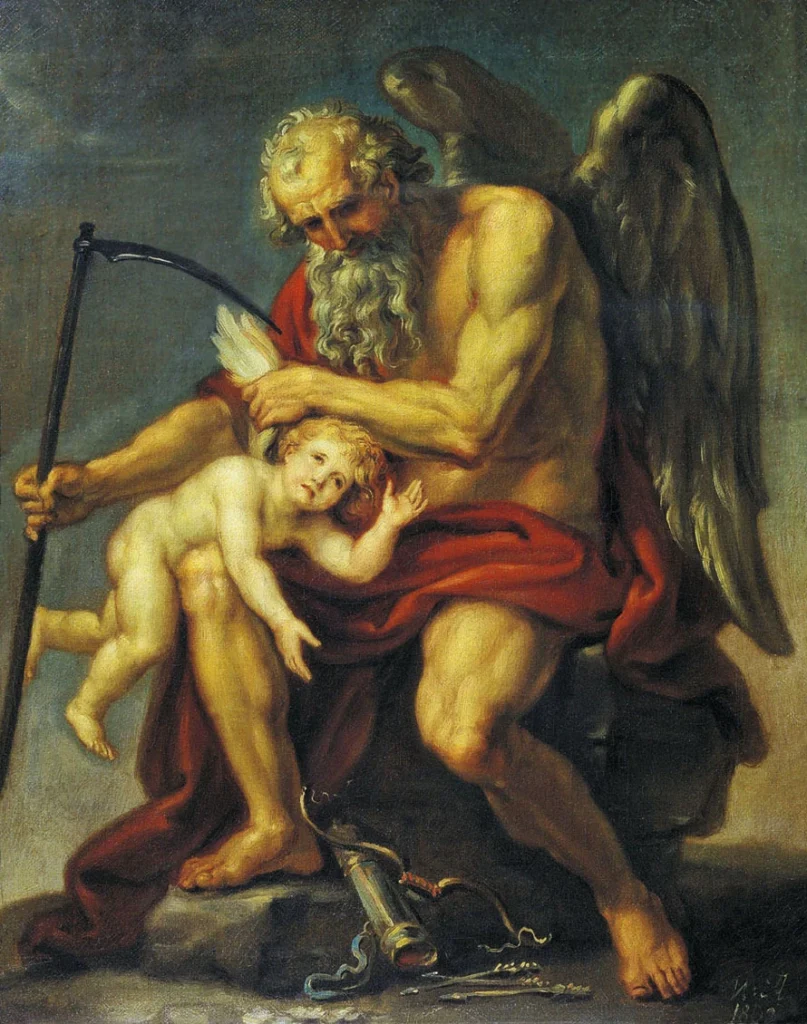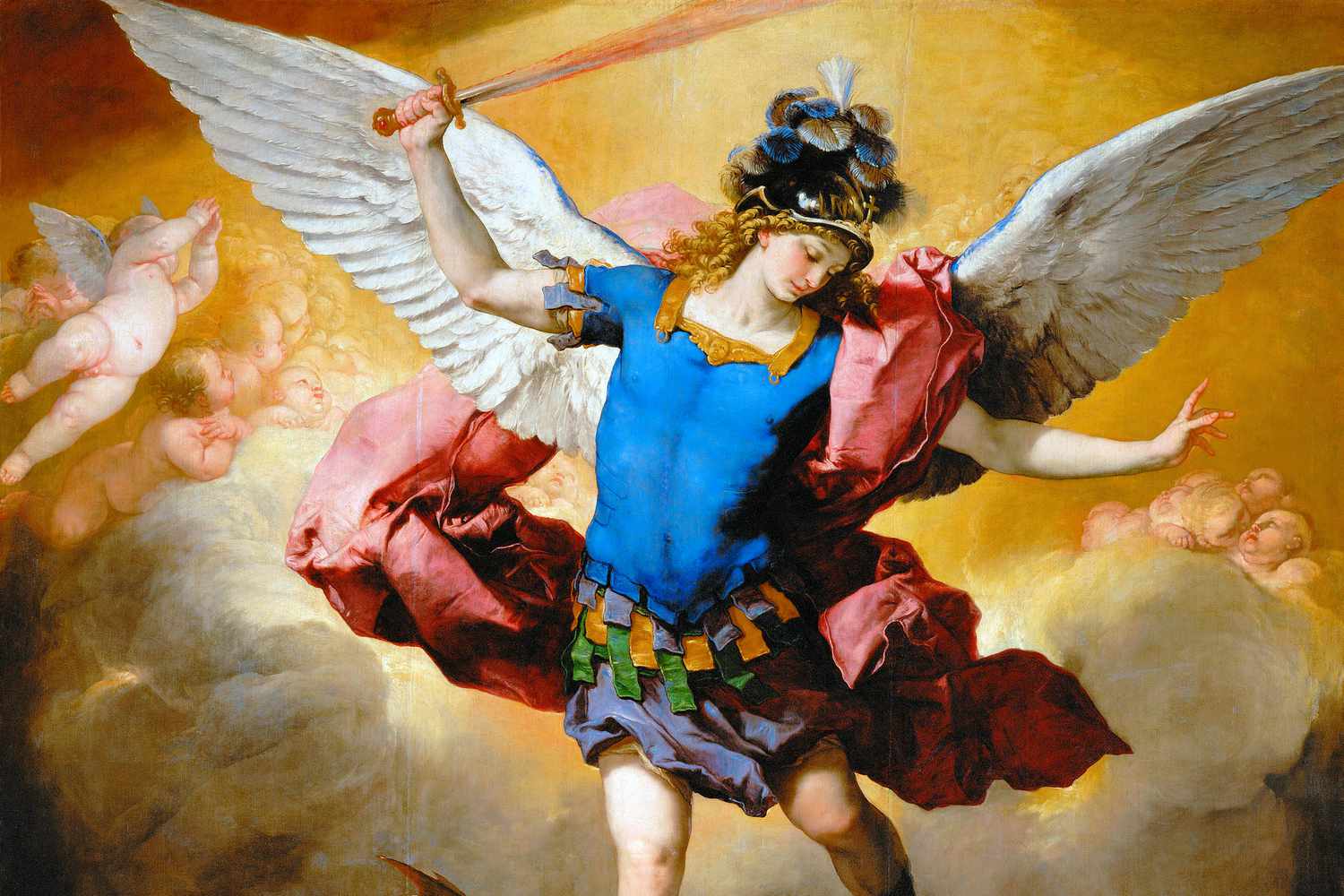The spectacle of a solar eclipse is never a simple matter of astronomy. It carries the quality of a rite performed in the sky. When the Sun is hidden by the Moon, even if partially, the order of visibility is reversed. The lord of clarity and centre is cast into silence and the lesser light takes his throne. But when this act unfolds on a Sunday, the weight grows heavier, since the Sun is eclipsed within his own temple.
The symbolism is sharpened by the coincidence of time. The king falls from sight on the very day marked for his coronation. In today’s darkened hour, the Logos himself, image of radiant speech, passes through suspension and silence. It is an eclipse marked not only by the Moon’s shadow, but by the deeper gravity of the day of the Sun, bound to resurrection, to the eighth day beyond creation, and to the Archangel who wields the sword of judgement.
The shadow of the eclipse only augments when we look at Saturn in the sky, as he presses this moment of stillness from four directions: he rules the anaretic degree of Virgo where the two luminaries are joined; he rules his own retrograde place in Pisces across the sky; he rules the current bound of Mercury in Libra; and he stands in exact opposition against Sun and Moon, across the wheel, in the twelfth house. The eclipse is carried in the arms of time’s oldest ruler, who weighs the Sun on his own scales.
I. The Eclipse of the Logos
A solar eclipse is always an image of inversion. The Sun, principle of identity and direction, is covered by the lunar body that belongs to memory, to dream, to the restless waters of the psyche. For a brief interval, the clarity of the Logos is wrapped in shadow. This is the withdrawal of Tifereth, the sephira of harmony and visible light, the beauty that reflects the eternal source into the order of the world. The eclipse suspends that reflection. The golden mirror is turned away and the soul must confront its own night.
Traditional astrology places this event under the hand of Saturn when it occurs at the anaretic degree of Virgo. It is the last point of a sign, often carrying the tension of completion, crisis and burden. In Virgo, the partial eclipse belongs to the sixth house, the one of Misfortune, where labour, illness and service bind the mortal body to the wheel.
Saturn himself, retrograde in Pisces and ruling by bound, stands in opposition across, in the twelfth, the house of undoing and hidden things. The geometry reveals the old lord of time seated on both ends of the axis. He governs the limit, the weight, the silence. The eclipse is then marked by Saturn, as he rules the portion of the zodiac where the Sun is partially extinguished and occupies the opposite chamber of the chart, holding his station as jailer of souls. Not only that, but he also influences the regent of the eclipse, as Mercury now stands in the saturnine bound of Libra.
II. The Sabbath of the Sun
Sunday is the day of the Logos. It is the day of the rising again, the day when the Christian mystery proclaims the resurrection of the body of light. It is also the day of Sol Invictus, the unconquered Sun who stands at the heart of imperial and mystical cult. When an eclipse happens on this day the symbol is cut with double iron. The king falls silent in his own court and the resurrection is itself eclipsed.

But there is a deeper current. The day of the Sun is also called the eighth day,beyond the sevenfold creation, a sign of the new world that follows the cycle of time. It belongs to the mystery of Christ in the tomb. Between the crucifixion and the rising there is a day of silence, when the Logos rests in darkness. The eclipse on Sunday carries the same structure. The outer Sun is removed and the world trembles as if it were Holy Saturday written across the heavens.
In this way, the partial eclipse turns the solar day into a sabbath of shadows. It is not the sabbath of Saturn marked on the seventh day, but it borrows its quality. It bends the day of triumph into a day of concealment. The sword of Michael remains in its sheath as Zaphkiel stands tall. The choir of angels is mute. The world waits for the Word to speak again. It is the same paradox found in mystical theology, where the Divine speaks most truly in silence and the highest vision is a dark cloud.
III. Michael and the Black Sun
Michael is often pictured with a sword raised in one hand and a balance in the other. The image comes from the ancient practice of weighing the soul. In Egypt the heart of the dead was set against the feather of Maat; in later vision it was Michael who held the scales. The balance points to Libra, the place where day and night are equal and the Sun tips into descent. With Mercury in Libra, within the bound of Saturn at the angle of the Descendant, the regent of the eclipse is set within the scales, under the authority of Saturn, carrying the same sombre quality into the horizon of the Other.
Michael’s presence in this sign is not accidental. Libra is ruled by Venus, a planet of harmony and proportion, but it is also the sign of the exaltation of Saturn. The union of these two powers gives Libra a unique quality: beauty under measure, grace tested by weight, proportion brought to trial. Michael embodies that fusion. His sword separates false from true; his balance weighs the soul without excess. He is the solar archangel who reflects the Logos.
An eclipse marked by Libra as the ruler sign carries this juridical character. The Sun is partially veiled and the ruler of the event, Mercury, is caught in the balance, held in Saturnine bound, reflecting Michael’s judgement. It is a celestial court. The light is hidden, but the silence is full of weight. The sword of Michael remains aloft and the balance hangs still.
The gnostic, hermetic traditions understand this moment of silence as revelation. The Logos is partially veiled so that the soul may confront its own measure. The eclipse becomes the psychostasia of the world. Each soul is placed in the scale of Libra, under the gaze of Michael, with Saturn’s hand pressing upon the balance.
Κύριε ελέησον
